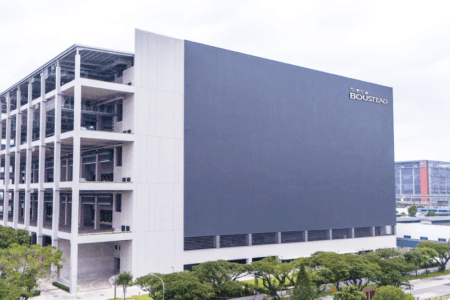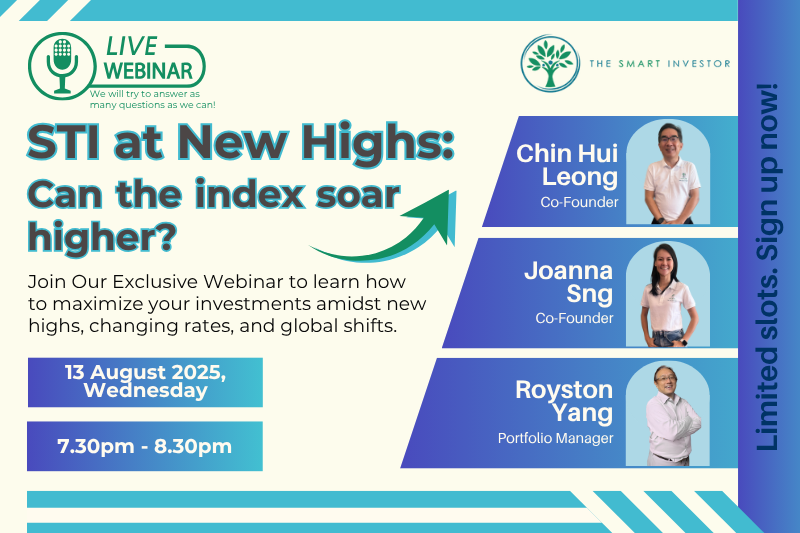Welcome to this week’s edition of top stock market highlights.
Singapore Post (SGX: S08)
Singapore Post, or SingPost, released its full fiscal 2025 (FY2025) earnings ending 31 March 2025.
The postal service provider reported a net profit of S$245.1 million, up more than threefold year on year, aided by a net exceptional gain of S$222.2 million.
This exceptional gain comprised a gain on disposal from the divestment of SingPost Australia Investments, which was partially offset by impairment charges on its Quantium Solutions investment.
Excluding this exceptional gain, SingPost’s underlying net profit would have plunged 40% year on year to S$24.8 million.
The group saw its revenue dip by 7.5% year on year for FY2025, led mainly by year-on-year declines in its Australian and international business divisions.
Operating profit increased by 30.8% year on year to S$44.3 million, but the postal provider saw lower investment income and higher finance expenses.
Tellingly, SingPost’s postal office network remains unprofitable with an operating loss of S$14.4 million.
A bright spot was the group’s property segment which achieved full occupancy for FY2025 for its retail mall.
Revenue for this segment rose 12% year on year to S$86.9 million while operating profit climbed 14.7% year on year to S$48.4 million.
SingPost eked out a positive free cash flow of S$26.7 million for FY2025, a fall of 30% from the previous fiscal year.
A special dividend of S$0.09 was declared, which represents two-thirds of the gain on the disposal of its Australian business.
Management warned of ongoing trade tensions caused by US tariffs that have disrupted international trade flows and created higher volatility in supply chains.
Cross-border logistics has also come under pressure, and SingPost believes that these challenges will persist into FY2026.
Meanwhile, SingPost’s strategic review and reset are ongoing.
ComfortDelGro Corporation (SGX: C52)
ComfortDelGro Corporation, or CDG, announced its first quarter of 2025 (1Q 2025) business update.
Revenue increased by 16.4% year on year to S$1.17 billion, mainly because of contributions from newly-acquired A2B and Addison Lee, along with UK London Public Transport contracts being renewed at improved margins.
Operating costs increased just 15% year on year to S$990.3 million.
As a result, operating profit surged 45.5% year on year to S$81.5 million.
Despite the lack of S$6.1 million in dividends collected from A2B in 1Q 2024, CDG still reported a 19% year-on-year climb in net profit to S$48.3 million.
The land transport operator generated slightly higher operating cash flow of S$155.6 million versus S$145.3 million back in 1Q 2024.
However, capital expenditure (capex) stood at S$306.1 million for the quarter, principally because of S$232 million of capex for a fleet of 452 funded buses for its Metroline Manchester contract along with fleet replacement and bus accessories.
Management reported that overseas revenue contribution exceeded more than 50% of the group’s revenue for the first time in its history.
Its balance sheet remains strong, with adequate cash and debt facilities to cater for fleet capex and electrification.
SIA Engineering (SGX: S59)
SIA Engineering, or SIAEC, also reported its FY2025 earnings recently.
The maintenance, repair, and overhaul (MRO) specialist saw revenue rise 13.8% year on year to S$1.25 billion.
Operating profit soared more than sixfold year on year to S$14.6 million.
Buoyed by a higher share of profits from associates and joint ventures, SIAEC saw its net profit surge 43.8% year on year to S$139.6 million.
The group’s line maintenance division handled 8% more flights for FY2025 at 157,358.
SIAEC’s base maintenance division saw steady MRO demand, pulling in 656 light checks and 75 heavy checks in Singapore.
Its Philippines base conducted 43 heavy checks, nearly double of the 25 in the previous fiscal year.
SIAEC also broadened its component MRO services through a network of workshops and component MRO joint ventures.
A final dividend of S$0.07 was declared for FY2025, taking the total dividend for the fiscal year to S$0.09, one cent higher than FY2024’s S$0.08.
On the US tariffs, SIAEC sees a limited impact for now but the potential second-order effects are hard to assess at this point.
Measures are being put in place to mitigate the potential impact of these tariffs and management is closely monitoring geopolitical developments and industry trends.
Many investors think DeepSeek lowering AI costs means less revenue for tech companies. But that’s not the full story, and believing it could cost you. In our latest free report, we unpack a surprising insight from a top tech CEO who explains why lower AI costs may actually drive more tech spending, not less — and he’s got the numbers to prove it. If you’ve misunderstood this trend, you could miss out on some of the biggest investment opportunities. Click here now to access “How GenAI is Reshaping the Stock Market” today to get the full breakdown.
Follow us on Facebook and Telegram for the latest investing news and analyses!
Disclosure: Royston Yang does not own shares in any of the companies mentioned.






